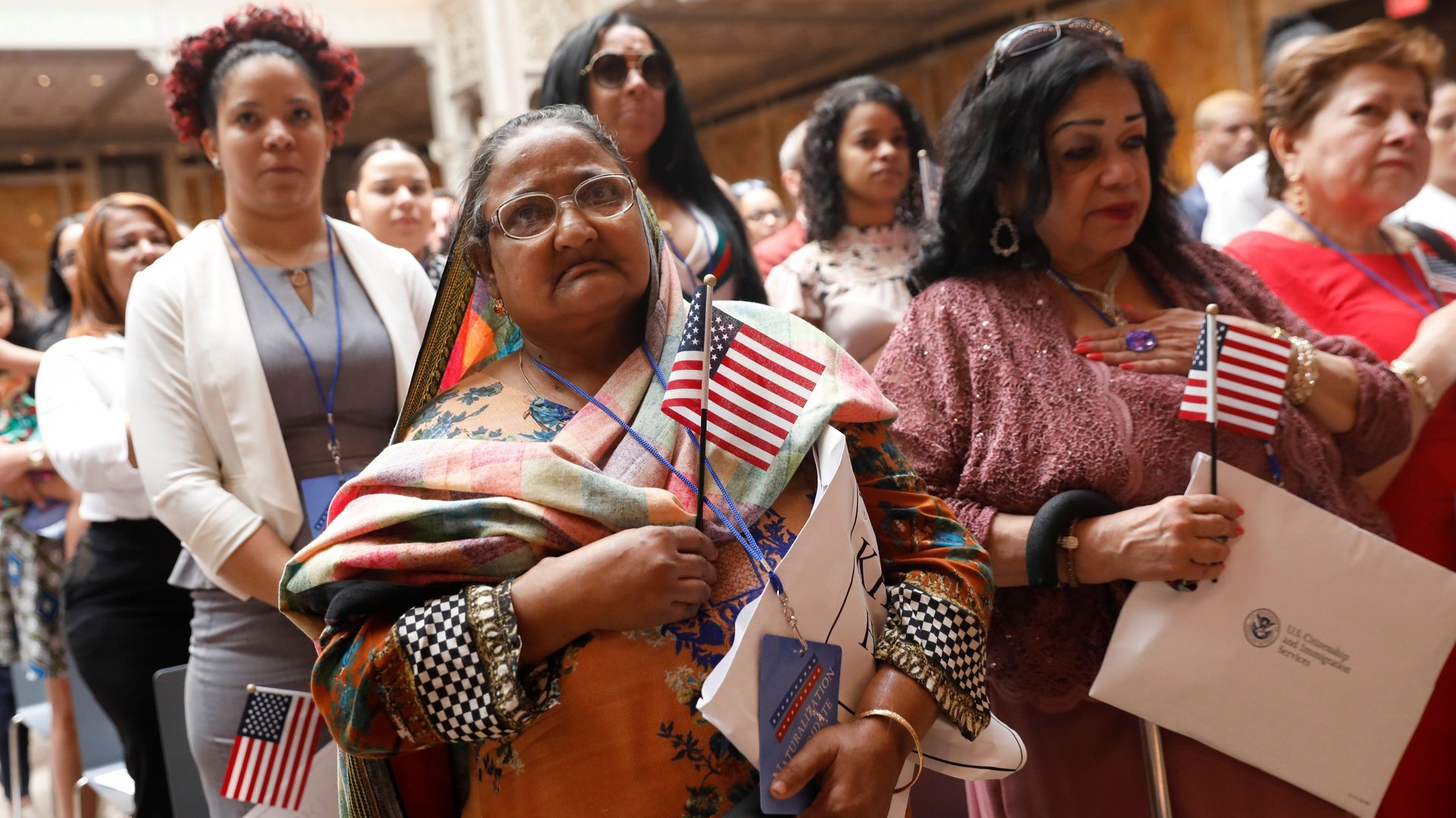The US is about to redefine the occupations that qualify for H-1B visas
The next three months are crucial for immigrant workers and their spouses in the US.


The next three months are crucial for immigrant workers and their spouses in the US.
By January 2019, the Donald Trump administration plans to revise the definition of “specialty occupation,” a prerequisite for the much sought-after H-1B visa, the department of homeland security (DHS) stated in its Unified Fall Agenda 2018 released on Oct. 17.
Currently, the US government defines a specialty occupation as a job that “requires (a) theoretical and practical application of a body of specialised knowledge along with at least a bachelor’s degree or its equivalent. For example, architecture, engineering, mathematics, physical sciences, social sciences, medicine and health, education, business specialties, accounting, law, theology, and the arts are specialty occupations.”
Though the authority did not share any details on how it plans to tweak the definition, experts expect the criteria to become more stringent.
As part of ramping up the scrutiny around H-1B visa allocations, the federal agency also said it will “revise the definition of employment and employer-employee relationship to better protect US workers and wages” and propose ways to prevent skirting of wage laws.
Any modification to the H-1B rules will have the most drastic impact on Indians, who make for three-quarters of all beneficiaries of the temporary skilled-worker visa programme.
However, US firms won’t remain unscathed.
“Several American companies are global in their reach, and depend upon the stability and opportunity afforded to their workforce in the US,” said Suman Raghunathan, executive director at immigration advocacy group South Asian Americans Leading Together (SAALT). “Cutting off the ability of H1-B workers and their spouses with H-4 visa status to fully contribute to the US economy and for their own future stability makes little sense and will only serve to stunt overall American productivity, industry stability, and innovation.”
Moreover, the US’s visa overhaul will not stop at just H-1B.
H-4 tremours
In January 2019, the US authorities will finally announce their long-pending decision on the employment eligibility of H-4 visa holders, the Unified Fall Agenda 2018 said. H-4 is issued to the dependents of H-1B holders.
In another proposed rule of the Unified Fall Agenda, the DHS said it is “proposing to remove from its regulations certain H-4 spouses of H-1B non-immigrants as a class of aliens eligible for employment authorisation” by early next year.
After facing opposition for years, in 2015, the US began allowing H-4 visa holders, whose spouses are awaiting green cards, to get the employment authorisation document (EAD) and work in the country. Most of the 100,000-plus EADs issued since 2015 have gone to Indians and 90% to women.
The Trump administration argues that eliminating H-4 visa-holders from the workforce creates more room for local talent. But this logic ignores how few H-4 visa-holders are being welcomed into America’s workforce, and the merit they bring, argue immigration experts. Over half of the H-4 visa-holders in the US are highly-educated, armed with a master’s degree.
“It’s important to remember that employment authorisation for H-4 visa holders is limited to a very small number of people,” Virginia-based immigration authority Jonathan Wasden said. “Some of my H-1B client’s have spouses with amazing credentials…So it really is a benefit to the US economy if they can work.”
Gearing up for the three-month public comment period before a rule can come into effect, several citizen groups are working on strategies to influence the government’s decision making.
“I have seen the effectiveness of strong comments in 2014, during the public comment period for the rule granting the H-4 EAD when I worked with students from the School Of Visual Arts (SVA) in New York to create a video talking advocating for H-4 women that went viral and was instrumental in increasing comments that led to the H-4 EAD coming into force,” said Meghna Damani, who left her advertising job in Mumbai to marry and move to the US on a H-4 and later went on to make a movie about the plight of women like her.